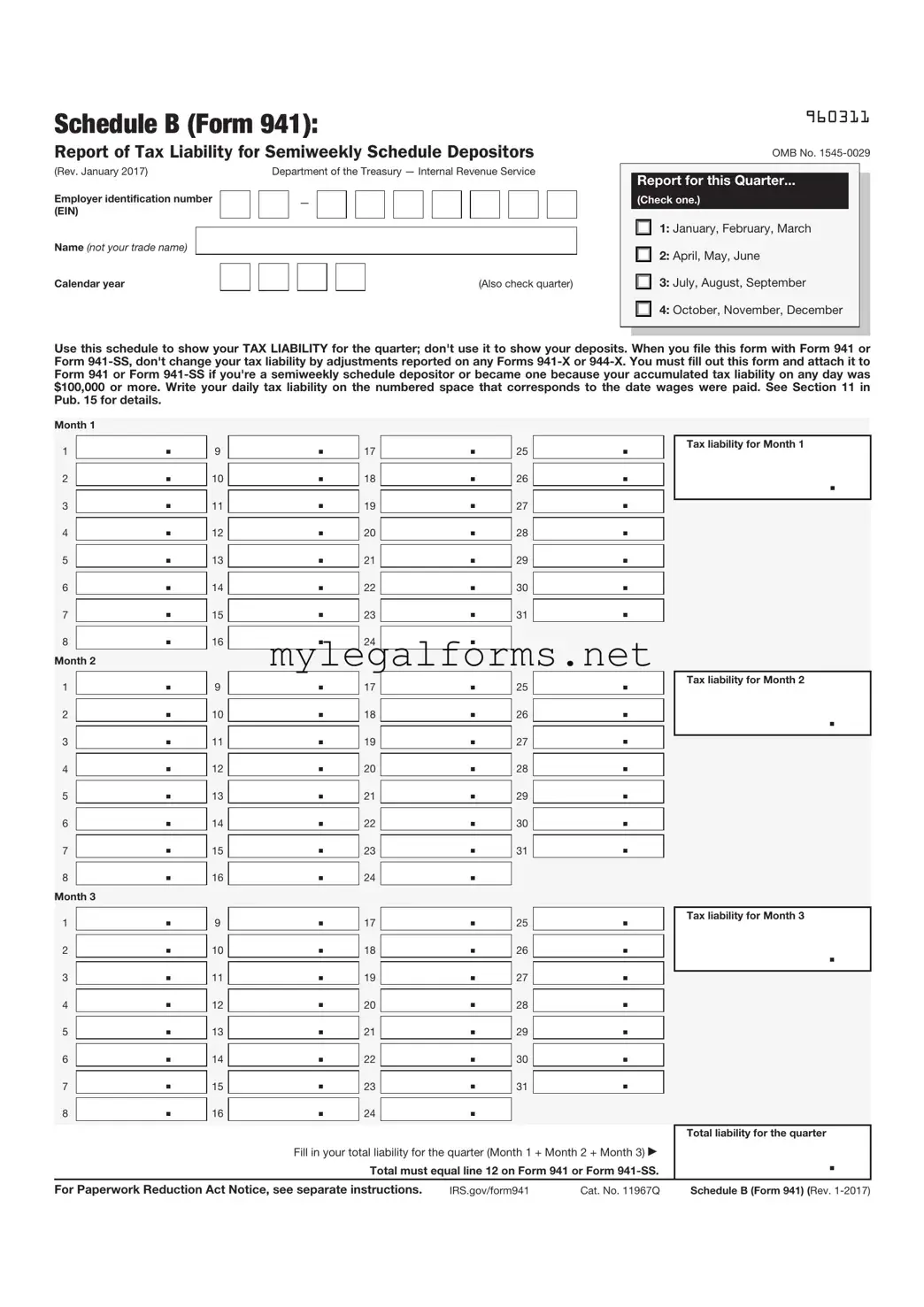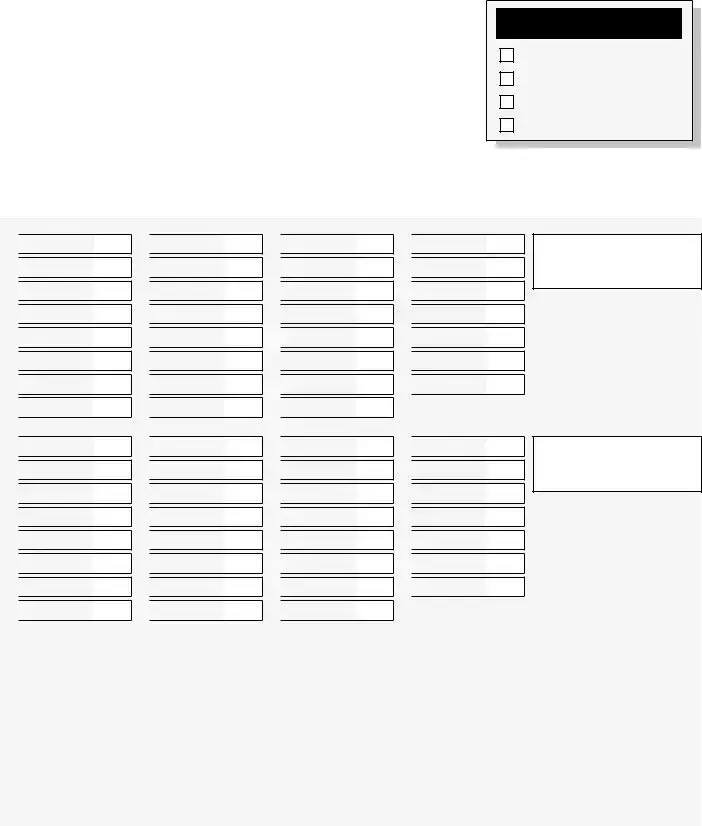IRS Schedule B 941 Template
The IRS Schedule B 941 form is used by employers to report their federal payroll tax liabilities. This form provides detailed information about the amount of taxes withheld from employees' paychecks and the employer's share of Social Security and Medicare taxes. Understanding how to complete Schedule B accurately is crucial for maintaining compliance with federal tax regulations.
Launch IRS Schedule B 941 Editor


 .
. .
. .
. .
. .
. .
. .
. .
. .
. .
. .
. .
. .
. .
. .
. .
. .
. .
. .
. .
. .
. .
. .
. .
. .
. .
. .
. .
. .
. .
. .
. .
. .
. .
. .
. .
. .
. .
. .
. .
. .
. .
. .
. .
. .
. .
. .
. .
. .
. .
. .
. .
. .
. .
. .
. .
. .
. .
. .
. .
. .
. .
.